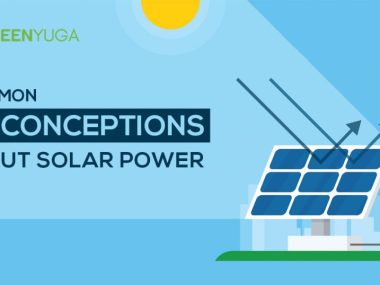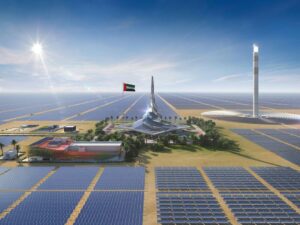In the quest for sustainable energy solutions, the economic feasibility of various energy sources is pivotal in influencing the future energy scenario. Solar power, known for its swift technological progress and decreasing expenses, has positioned itself as a strong competitor in the international energy sector. This overview presents an economic evaluation of solar energy in contrast to other main energy sources such as coal, natural gas, nuclear, and wind.
When examining the economic aspects of solar energy in comparison to other energy sources, various factors must be taken into consideration. These factors include capital costs, operating costs, capacity factors, subsidies, environmental impact, and technological advancements. Below is a comprehensive analysis of how solar energy compares to coal, natural gas, nuclear, and wind in terms of these factors.
1. Capital Costs
Solar Energy: Over the last ten years, there has been a significant reduction in the cost of solar photovoltaic (PV) systems. Currently, in 2023, the installation cost for utility-scale solar PV stands at approximately $1,000-$1,500 per kilowatt (kW) installed.
Coal: Capital costs for new coal plants are higher, ranging from $2,000 to $3,500 per kW, largely due to the need for pollution control equipment .
Natural Gas: Natural gas power plants have a comparatively low construction cost, ranging from $800 to $1,200 per kilowatt (kW) in terms of capital expenditure.
Nuclear: Nuclear power has very high capital costs, typically $6,000-$12,000 per kW, due to stringent safety regulations and complex technology .
Wind: The cost for onshore wind is similar to solar, around $1,200-$1,800 per kW, while offshore wind is more expensive, around $3,000-$5,000 per kW .
2. Operating Costs
Solar Energy: Solar PV systems have low operating costs since there are no fuel expenses and minimal maintenance requirements, typically around $10-$15 per MWh .
Coal: Coal-fired power plants incur significant operating expenses as a result of fuel and maintenance costs, typically falling within the range of $30 to $60 per MWh.
Natural Gas: Operating costs for natural gas plants are moderate, around $20-$40 per MWh, with fuel costs being a significant portion .
Nuclear: Nuclear power plants incur moderate to high operating expenses, ranging from $25 to $35 per MWh, primarily due to the substantial maintenance and operational safety standards they must adhere to.
Wind: Wind power has low operating costs, typically $10-$20 per MWh, similar to solar .
3. Levelized Cost of Electricity (LCOE)
LCOE is a key metric that compares the overall costs of generating electricity from different sources over their lifetimes.
Solar Energy: The LCOE for utility-scale solar has declined to approximately $30-$60 per MWh in sunny locations .
Coal: The LCOE for coal is higher, ranging from $60 to $150 per MWh, depending on the age and technology of the plant .
Natural Gas: The LCOE for combined-cycle natural gas plants is competitive, between $40 and $70 per MWh .
Nuclear: The LCOE for nuclear is relatively high, often between $80 and $120 per MWh
Wind: The LCOE for onshore wind is competitive with solar, around $30-$60 per MWh, while offshore wind is higher, between $70 and $150 per MWh .
4. Capacity Factors
Capacity factor is the actual output over a period compared to the maximum possible output.
Solar Energy: Solar typically has a capacity factor of 15-25% due to its dependence on sunlight .
Coal: Coal plants have a higher capacity factor, usually 40-80% .
Natural Gas: Combined-cycle natural gas plants also have a high capacity factor, around 40-60%
Nuclear: Nuclear plants typically achieve very high capacity factors, over 90% .
Wind: Wind’s capacity factor varies widely, generally between 20-40% onshore and up to 50% offshore .
5. Environmental and Social Costs
Solar Energy: Solar energy has a low environmental footprint once it is set up, as it produces no emissions and requires minimal land use when incorporated into current buildings.
Coal: Coal has significant environmental costs, including CO2 emissions, air pollutants, and land degradation from mining .
Natural Gas: While cleaner than coal, natural gas still emits CO2 and methane, a potent greenhouse gas
Nuclear: Nuclear energy does not emit any direct pollutants, however, it presents difficulties in managing radioactive waste and the potential for significant financial burdens in the event of a disaster.
Wind: Wind energy has minimal emissions and environmental impact, although it can affect local wildlife and ecosystems .
6. Subsidies and Incentives
Solar Energy: Solar benefits from various subsidies, including tax credits, feed-in tariffs, and net metering in many regions, making it more economically viable .
Coal: Subsidies are provided to certain coal industries, especially in areas where coal mining plays a crucial role in the economy. However, these subsidies are generally decreasing
Natural Gas: Natural gas benefits from subsidies related to fossil fuel exploration and infrastructure development
Nuclear: Nuclear energy receives substantial government support for research, development, and operational security
Wind: Wind energy is also heavily subsidized, with similar support mechanisms as solar .
7. Market Trends and Technological Advancements
Solar Energy: The continuous progress in solar technology, including the development of highly efficient PV cells and more affordable energy storage solutions, is consistently reducing expenses and enhancing economic viability
Coal: Coal is facing declining investment and increasing regulatory pressures due to its environmental impact .
Natural Gas: Improved extraction technologies such as fracking have contributed to the perception of natural gas as a transitional fuel.
Nuclear: Advances in small modular reactors (SMRs) may reduce costs, but nuclear remains economically challenging due to high upfront investments
Wind: Advancements in turbine design and materials are enhancing the efficiency and cost-effectiveness of wind energy.
In conclusion, context of the rapidly evolving global energy market, solar energy has emerged as a leading contender in terms of economic competitiveness. Its dramatic reduction in costs and favorable operating characteristics place it in a strong position compared to traditional fossil fuels and other renewable energy sources. The following conclusions summarize how solar energy fares economically against other key energy sources:











